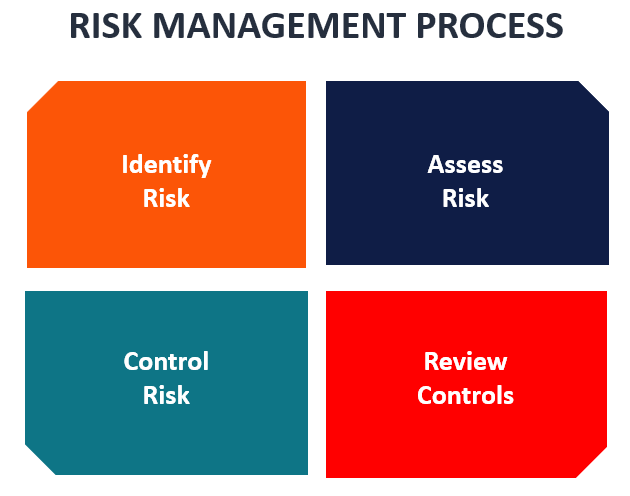Unlocking the Actual Importance of Risk Management for Continuous Growth
Unlocking the Actual Importance of Risk Management for Continuous Growth
Blog Article
Exploring the Relevance of Risk Management for Effective Decision-Making Strategies
In the complex world of organization, Risk Management arises as an important consider the decision-making procedure. The ability to recognize potential dangers and possibilities, and strategize as necessary, can spell the distinction between success and failing. With devices such as SWOT and PESTEL, organizations are furnished to make enlightened choices, cultivating strength and adaptability in an ever-changing environment. Wondering how this works? Allow's unload the dynamics further.
Recognizing the Concept of Risk Management
Risk Management, a crucial part in decision-making, is commonly misconstrued or oversimplified. Usually, it describes the recognition, evaluation, and prioritization of risks to lessen, monitor, and control the probability or impact of unfortunate occasions. Nonetheless, it's not just concerning avoiding negative outcomes, but also about identifying possible chances. Risk Management entails organized and disciplined techniques, utilizing data and insightful analyses. It needs a comprehensive understanding of the organization's context, goals, and the potential threats that could prevent them. From financial uncertainties, legal liabilities, calculated Management mistakes, to mishaps and natural disasters, it resolves different risks. Notably, efficient Risk Management is not stationary; it's a constant, forward-looking procedure that develops with changing conditions.
The Role of Risk Management in Decision-Making Processes
In the realm of tactical planning and organization procedures, Risk Management plays an integral role in decision-making procedures. Risk Management thus becomes an essential device in decision-making, aiding leaders to make enlightened options based on an extensive understanding of the risks entailed. Risk Management serves as an important element in the decision-making procedures of any type of company.

How Risk Management Improves Strategic Planning
In the context of critical preparation, Risk Management plays a pivotal function. Launching with the recognition of potential threats, it better includes the execution of Risk reduction procedures. The function of Risk Management is vibrant however not fixed, as it demands constant surveillance and adjusting of methods.
Identifying Potential Dangers

Carrying Out Risk Reduction
Having actually developed the value of determining prospective dangers, the next step is to explore Risk mitigation. This process involves developing and implementing techniques to take care of recognized threats properly. It is a critical facet of tactical preparation as it enhances decision-making by minimizing potential adverse end results. Risk mitigation strategies can vary from Risk evasion, Risk transfer, to run the risk of reduction. Each technique should be customized to the details Risk, considering its potential influence and the organization's Risk resistance. Moreover, efficient Risk reduction needs a deep understanding of the Risk landscape and the possible effect of each Risk. This understanding allows organizations to focus on threats and allot sources successfully, making certain that the most significant threats are attended to first.
Tracking and Adjusting Approaches
Though Risk mitigation is a critical action in strategic planning, continuous monitoring and adjustment of these approaches is equally vital. This ongoing procedure permits organizations to determine brand-new risks and reassess existing ones, ensuring the executed strategies stay reliable in the ever-changing business atmosphere. It additionally provides a chance to examine the success of the Risk Management steps, allowing changes to be made where required, further improving critical preparation. Effective monitoring and adjustment require using analytics and vital performance indicators (KPIs) to gauge effectiveness. These devices give useful data-driven insights that can notify critical decision-making. Surveillance and readjusting Risk Management strategies is an important part for boosting an organization's durability and calculated planning.
Instance Researches: Successful Risk Management and Decision-Making
On the planet of business and money, effective Risk Management and decision-making frequently act as the pillars of flourishing business. One such entity is a multinational oil company that mitigated financial loss by hedging against changing oil costs. In another circumstances, a tech startup grew by determining and accepting risky, high-reward methods in an unstable market. A global financial institution, faced with regulatory unpredictabilities, effectively navigated the scenario with proactive Risk analysis and dynamic decision-making. These cases highlight the worth dig this of astute Risk Management in decision-making procedures. It is not the absence of Risk, but the Management of it, that usually separates effective firms from unsuccessful ones. These situations emphasize the important role of Risk Management in critical decision-making. importance of risk management.
Devices and Techniques for Efficient Risk Management
Browsing the elaborate puzzle of Risk Management calls for the best collection of tools and methods. These tools, such as Risk signs up and heat maps, help in recognizing and evaluating possible risks. Methods consist of both measurable approaches, like sensitivity analysis, and qualitative approaches, such as SWOT evaluation. These assistance in focusing on threats based on their possible influence and possibility. Risk reaction approaches, a key component of Risk Management, include accepting, avoiding, transferring, or mitigating risks. Tracking and controlling dangers, with routine audits and testimonials, make certain that the strategies remain reliable. With these techniques and devices, decision-makers can browse the complex landscape of Risk Management, thereby helping with notified and efficient decision-making.
Future Fads in Risk Management and Decision-Making Strategies
As we discover the substantial landscape of Risk Management, it comes to be obvious that the devices and methods utilized today will continue to advance. Future patterns point in the direction of a raised dependence on innovation, with artificial knowledge and artificial intelligence playing explanation significant duties. These innovations will make it possible for organizations to forecast prospective risks with better accuracy and make even more enlightened choices. Furthermore, there will be an expanding emphasis on durability, not just in handling risks yet likewise in recovering from damaging situations. Last but not least, the idea of Risk culture, where every participant of an organization realizes and involved in Risk Management, will acquire find out here much more importance. These fads declare an even more positive and comprehensive strategy towards Risk Management and decision-making.
Verdict

Risk Management hence comes to be a crucial tool in decision-making, aiding leaders to make educated choices based on a comprehensive understanding of the threats included. Risk reduction methods can range from Risk avoidance, Risk transfer, to run the risk of decrease (importance of risk management). Effective Risk mitigation needs a deep understanding of the Risk landscape and the possible effect of each Risk. Risk feedback techniques, a key component of Risk Management, include accepting, staying clear of, transferring, or mitigating threats. The idea of Risk culture, where every participant of an organization is conscious and included in Risk Management, will certainly get much more prestige
Report this page